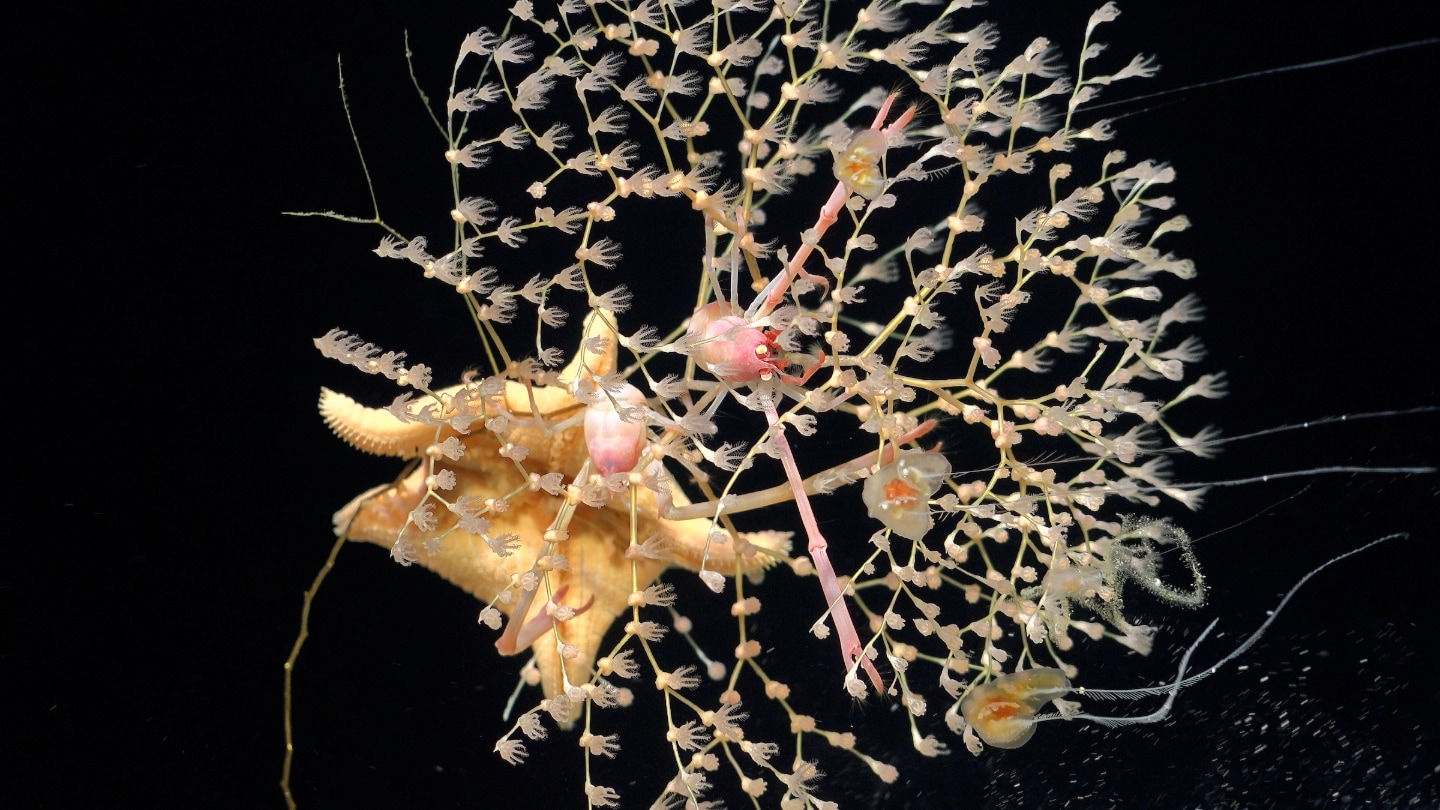New Species Discovered: Remote Seamounts in Southeast Pacific Harboring Potential Biodiversity

Some 1,400 kilometers off the coast of Chile, rare deep-sea creatures drift along a garden of sponges and corals that grow along the flanks of a 3,100-meter-tall undersea mountain.
A monthlong survey of mountain ecosystems in the remote seas of the southeastern Pacific Ocean has not only turned up a never-before-seen seamount but also revealed many species of sea life possibly new to science. Eighty species were observed in this part of the ocean for the first time, the Schmidt Ocean Institute in Palo Alto, Calif., announced August 28 in a news release.
The seamount discovery was a surprise, says oceanographer Jyotika Virmani, executive director of the institute. Satellite imaging of the area had shown only a low-resolution bump on the seafloor. The mammoth seamount is thousands of meters high, with a summit that sits 994 meters below the ocean surface.
Using a diving robot to film and explore the new seamount plus nine others, expedition researchers found a teeming ecosystem, including a garden of sponges and ancient corals about twice the breadth of a basketball court. The garden isn’t as dense as shallow water reefs, Virmani says, which are “absolutely chockablock with corals,” but still impressive for such a deep water reef (SN: 10/26/23).
The robot encountered the ghostly white Casper octopus, named for its uncanny resemblance to the cartoon specter Casper the Friendly Ghost. The species has yet to be formally described by scientists, and until now was known only from the North Pacific.
The team also gathered the first-ever footage of a living Promachoteuthis squid. “It’s been brought up in nets,” Virmani says. “But they’ve never been living samples.”
Twenty of the encountered animal species may be new to science and found only on the summits of their home seamounts, adding to 150 possible new species from two previous expeditions. The animals include sea anemones, urchins, shrimp and a squat lobster. The team also found a fossil that may be from a new species of ancient whale, Virmani says, but this has yet to be confirmed.
“[The findings] show this part of the world is very poorly explored at the moment, but it does hold a lot of interesting wildlife.”




